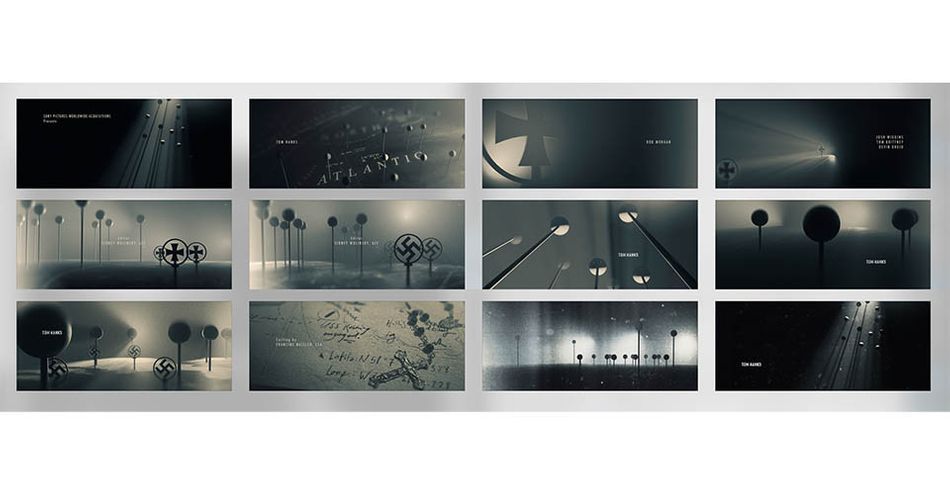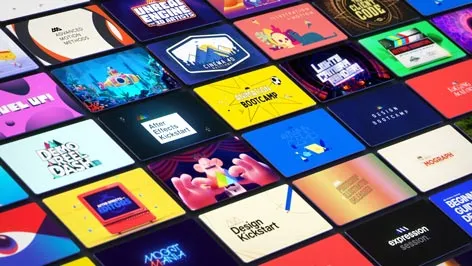How Vincent used C4D and Redshift for the WWII drama, Greyhound
When the filmmakers behind the film Greyhound—starring Tom Hanks as a U.S. Naval commander escorting an Allied convoy through hostile waters—wanted to find new ways to immerse audiences in the tense narrative, they turned to the creative team at London design and animation studio Vincent for ideas.

Using Cinema 4D and Redshift, Vincent Co-Founder John Hill and Vincent Designer Justin Blampied developed a series of informative, period-accurate visuals—including a CG navigation chart illustrating the film’s North Atlantic setting—designs for conning tower logos, and multiple approaches to the film’s titles.
Vincent’s work on the film spanned nearly two years, with the studio ultimately contributing a number of VFX shots and interstitials, as well as an evocative main-on-end title sequence. It was a long process, but it was also the kind of challenge Vincent relishes, Hill says. “People ask us what we specialize in a lot and, to be honest, we can pretty much turn our hand at anything. We’re just very good problem solvers.”

Helping to Tell the Story
Hill and his creative partner, Rheea Aranha, met in 2006 while working together on branding for the British ITV2 and ITV4 channels. While Hill’s credits included films like Quantum of Solace, Prometheus, and Spectre, Aranha is known for channel branding at the BBC, ITV and Channel 4. Hill worked closely with Blampied, a fellow creative and established title designer, on the Greyhound project. Together with Nathan McGuinness, Greyhound's VFX supervisor, the studio began by addressing the filmmakers’ concerns that some of the film's story elements could be hard to follow.
Among those elements was the Black Gap. The storyline follows Hanks’ character as he leads an Allied convoy across the Atlantic during World War II. At one point, the convoy must enter the Black Gap, an area out of range of air cover, making ships vulnerable to attack by German U-boats. To make the threat and the convoy’s position clear to audiences, Vincent created a photoreal navigation chart with strings and pins showing the convoy’s location and the route ahead, as well as the boundaries of the dangerous Black Gap that lay between the convoy and its destination.

For reference, the team researched everything from military ship designs to Nazi iconography, with a special emphasis on Winston Churchill’s own war room, including a visit to the Churchill War Rooms Museum in London. The biggest challenge was accuracy, which required visiting a facility to scan an actual North Atlantic navigation chart that measured over 3 feet by 3 feet. Next, they made the chart look older and more authentic to the period by using Photoshop weathering techniques to generate bump maps and displacement maps that could be used in Cinema 4D as passes for Redshift shaders.
“We had to get the rights to use a real chart, and then get a scan that was high-res enough to get in close and still hold up to a 4K output,” Hill recalls, explaining that the scan was so huge, it had to be cut down in Photoshop to the areas they wanted to focus on. “On top of that, we added our own paper textures and weathering into the bump-maps and the AOV passes.”

In addition to the chart, Vincent also modeled navigational instruments, pins and string, as well as crew reports and dossiers. “We used C4D’s Hair to generate realistic string, because Cinema 4D is always great for modeling something quickly that’s in your head,” Hills says. To reinforce the idea of a war room inside a vessel, the team replicated the chart table lighting and kept the ambient light low. “I think the combat information center rooms on warships were always quite dark, and the weather throughout the film is appalling, so it made sense to keep the lighting low and in context,” he recalls.
Conceptualizing Title Sequences
Asked to conceptualize the film’s title sequences, Vincent first came up with an idea based on the same North Atlantic navigation chart, but in a more foreboding, expressionistic environment with slender pins towering over a bleak landscape. “We created a very dark, moody environment where we could use extreme lighting and spotlights to cast menacing shadows through the Nazi pins across the chart,” Hill says. “We wanted to get the feeling of looking through murky water, like when you’re under the water in moonlight."
They also tried to blend the two worlds of the U-boats and the warships in a simple, engaging way, which was an extreme volumetric lighting exercise. "Redshift’s volumetric lighting and fast GPU rendering were great for creating dramatic shadows and the dark foreboding environments," Hill says, explaining that they used a lot of Photoshop artwork layering in C4D to pull out bump maps, normal maps and displacements for extra detail and interaction with Redshift’s lights.


A second title concept recreated instrumentation that would be found on board a ship during that time period, such as analog radar and sonar displays and teletype machines. “We thought that might be a lovely thing to do in CG, with close-up shots of the teletype strips of paper, and everything being handmade and mechanical,” he says. Ultimately, the film’s budget took the opening titles in a different direction, but Vincent did contribute some clarifying VFX work to the film, including conning tower emblems to help distinguish between the U-boats.
The film’s main VFX vendor, DNEG, provided the detailed U-boat models Vincent used to ensure their logos fit the actual shape of the towers. Vincent rendered rough stills of the models with the logos in place in Cinema 4D, then delivered the designs as high-res stills with alpha channels to DNEG for application and weathering to the CG models.

The idea to have Vincent create the film’s main-on-end title sequence came up at the very end of the studio’s involvement with the film. The visual treatment grew out of the team’s second main-title concept, and presented archival footage as viewed through rough, dirty aperture plates with different pieces of footage flipping on and off screen, as they would in a carousel slideshow.
“Everything is heavily graded to make it seem like you’re looking through a magnifying glass that had been scratched and weathered, as though someone was trawling through the old records of that time,” Hill says. The goal was to depict the heavy mechanics and flawed optical technology of the time. "Cinema 4D and Redshift allowed us to work at a really fast pace with little creative lag, which was essential when building a long sequence like that."

Created primarily in After Effects, the main-on-ends contain some of the original C4D concept work, which is visible as 2D elements behind the credits. “There are moments where we would have liked to have made certain slides in Cinema 4D to get better depth of field and lighting, but we didn’t have time or budget, unfortunately,” Hill says. Still, he’s happy with the work they contributed to the film.
“You see so much polished CG for title sequences, and this film was not about that. We didn’t want things to look CG, so we had to go photoreal and work backwards, weathering and degrading and applying layer after layer after layer to give it an authenticity. Getting that scale of texturing where the look isn’t questioned is an art form.”
Bryant Frazer—Writer/Editor - Colorado



